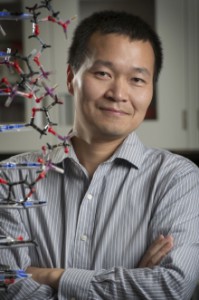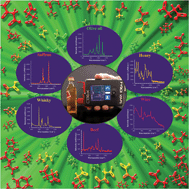From January – March 2016, our most downloaded Analytical Methods articles were:
Rasmus Bro and Age K. Smilde
Anal. Methods, 2014, 6, 2812-2831
DOI: 10.1039/C3AY41907J, Tutorial Review
David I. Ellis, Howbeer Muhamadali, Simon A. Haughey, Christopher T. Elliott and Royston Goodacre
Anal. Methods, 2015, 7, 9401-9414
DOI: 10.1039/C5AY02048D, Critical Review
Kathleen R. Murphy, Colin A. Stedmon, Daniel Graeber and Rasmus Bro
Anal. Methods, 2013, 5, 6557-6566
DOI: 10.1039/C3AY41160E, Tutorial Review
Alanna E. Sorenson, Samuel P. Askin and Patrick M. Schaeffer
Anal. Methods, 2015, 7, 2087-2092
DOI: 10.1039/C4AY02666G, Paper
S. Bibi, D. H. Bremner, M. Macdougall-Heasman, R. Reid, K. Simpson, A. Tough, S. Waddell, I. J. Stewart and K. H. Matthews
Anal. Methods, 2015, 7, 8597-8604
DOI: 10.1039/C5AY01711D, Paper
Heinz Fissan, Simon Ristig, Heinz Kaminski, Christof Asbach and Matthias Epple
Anal. Methods, 2014, 6, 7324-7334
DOI: 10.1039/C4AY01203H, Paper
Oleg Klykov and Michael G. Weller
Anal. Methods, 2015, 7, 6443-6448
DOI: 10.1039/C5AY00042D, Technical Note
Morgan Philp, Ronald Shimmon, Natasha Stojanovska, Mark Tahtouh and Shanlin Fu
Anal. Methods, 2013, 5, 5402-5410
DOI: 10.1039/C3AY40511G, Paper
Elizabeth J. McKenzie, Gordon M. Miskelly and Paul A. G. Butler
Anal. Methods, 2013, 5, 5418-5424
DOI: 10.1039/C3AY40537K, Paper
Ana López-Serrano, Riansares Muñoz Olivas, Jon Sanz Landaluze and Carmen Cámara
Anal. Methods, 2014, 6, 38-56
DOI: 10.1039/C3AY40517F, Critical Review













 Researchers in the US have punctured the appeal of prohibited tyre softening agents, marketed to racing teams as ‘undetectable’, by releasing
Researchers in the US have punctured the appeal of prohibited tyre softening agents, marketed to racing teams as ‘undetectable’, by releasing 





